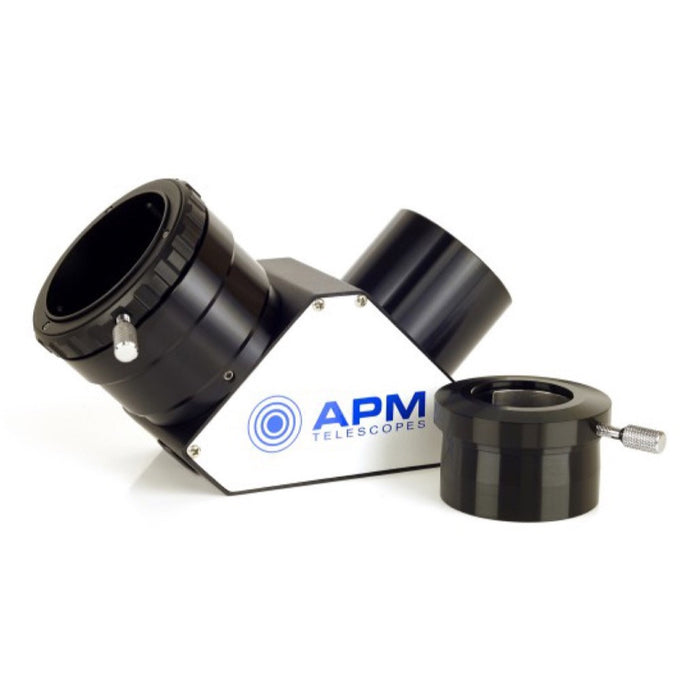As a visual amateur astronomer with 4 years experience I’ve heard serious amateur astronomers dismiss zoom eyepieces. Research has shown me that that view changed in 2001 with the arrival of the Tele Vue 2-4mm and 3-6mm Nagler zoom eyepieces. Is there a similar dismissal of Erect-Image prisms diagonals?
I called the director of David Astro to shed more light on the subject. He said:
“the reflectivity of a dielectric mirror diagonal is usually of around 99%. In a prism diagonal, each air-glass interface reduces the light transmission by around 4%. Since there are 2 glass-air interfaces, you've got 2x 4% loss, which means the transmissivity is of the order of 92%. Are you able to detect the difference in brightness between 99% and 92%?”
further elaborating that:
“the transmissivity/reflectivity is not the only thing to take into account when comparing a prism diagonal and a mirror diagonal. Prisms tend to disperse the light which can lead to loss of contrast and false colours in fast scope. I'd say that faster f/6 or f/7, mirror diagonals are the way to go to get the best image. For slower scopes, glass diagonals can produce better images.”
Under Toronto wrecked Bortle 9 skies, I have not at all been able to detect the difference between 99% and 92% brightness. Perhaps more experienced astronomers can see problems with the Erect-Image-prism.
So far, using the German-made APM 2 inch Erect-Image-prism with my William Optics 81mm, f/6.9 has made reading the star maps and maps of the moon more efficient. I did not see any vignetting or false colour in 2” and 1.25” eyepieces that I used for the comparison.
I repeatedly switched back and forth from the William Optics 99% Dielectric Dura Bright Diagonal - 2” to the APM prism. I sensed no loss of light. The Erect-Image diagonal gave views indistinguishable from the dielectric mirror. The bands of Jupiter may have been a teeny weeny bit clearer with the mirror diagonal, but I think this must have been because Jupiter was in a trashy horizon band of light.
In the prism, the major and many of the minor stars in the Pleiades were sharp and beautiful. The William Optics dielectric mirror diagonal showed everything with equal intensity but I liked the colours with prism. The voyage from the Aldebaran to this open cluster was simple, the erect-image easy to use.
The Alpha Persei moving group was clear as was NGC 884 and NGC 869. I used a 13mm APM eyepiece. The colour of stars was even more lovely that with the mirror diagonal.
The prism made looking at the moon with an atlas on the side effective and direct. I used the 3-6mm Nagler zoom: I could see details on the lava flooded crater Fracastorius - at 93x (6mm) and it was detailed even at 186x (3mm).
I’ve yet to see views of more planets and DSOs in a really dark sky.
It weighs about ~700 grams and is solidly built.

